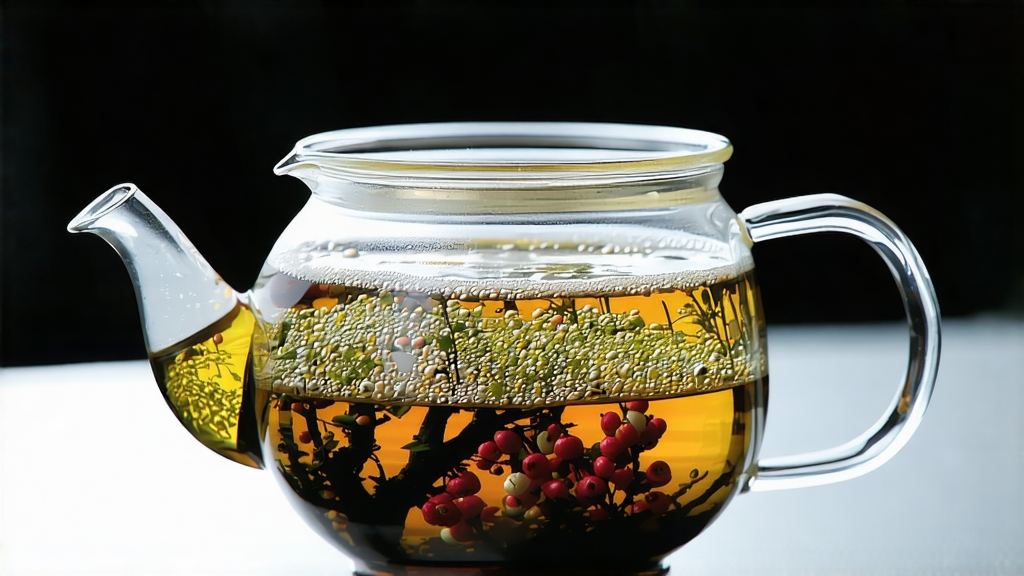
High among the perennially cloud-draped Meng Ding Mountains of Ya’an, Sichuan, a tea once reserved for emperors still unfurls its down-covered buds each early April. Meng Ding Huang Ya—literally “Meng Summit Yellow Bud”—is the oldest documented yellow tea, its fame reaching back to the Tang dynasty (618-907 CE) when it was pressed into cakes and carried along the southern Silk Road. By the Song era it had become the first tea annually presented at the capital, a tradition that continued through the Ming and Qing; legend claims that only buds picked before Qingming, while morning mountain mist still clings to the terraces, were deemed sufficiently ethereal for the Son of Heaven.
Unlike the green teas that dominate Sichuan’s export ledgers today, Meng Ding Huang Ya belongs to the micro-category of yellow tea, a family so small that even many Chinese connoisseurs have never tasted an authentic batch. The style is defined by one extra, almost invisible, step: the “men huang” or “sealed yellowing,” a slow, humid rest that nudges the leaf’s chlorophyll toward a muted olive-gold while preserving its amino-rich sweetness. The result is a liquor that lands somewhere between the bright grassiness of green tea and the mellow biscuit tones of lightly oxidised white, a profile often described by professional cuppers as “orchid in the nose, honey-water in the throat.”
The cultivar traditionally used is the local Meng Ding #9, a medium-leaf Camellia sinensis var. sinensis selected centuries ago for its ability to accumulate theanine at cooler night temperatures. Gardens sit between 800 m and 1,400 m, where thin air slows growth and the diurnal swing can exceed 12 °C. Farmers prune the bushes into arc-shaped canopies that hug the contour lines, maximising mist contact and reducing sun-scorch. No chemical inputs are permitted in the core heritage zone; instead, rows of aromatic Chinese cedar are interplanted to deter pests and fix aromatic resins that subtly perfume the leaf.
Picking is draconian: one tender bud plus an unopened scale leaf, 1.5–2 cm in length, plucked before 10 a.m. while dew is still visible. A skilled picker gathers barely 500 g fresh weight per hour; 50,000 such buds are required to make one finished kilogram. The leaf is immediately transferred to bamboo trays and withered for 90 minutes in diffused mountain light—never direct sun—to reduce surface moisture without locking in the green character.
The kill-green step is performed in iron woks pre-heated to 160 °C, but the firing lasts only 90–120 seconds, just enough to denature polyphenol oxidase while preserving a residual 55–60 % moisture. What follows is the signature men huang: the warm leaf is piled 5 cm deep inside cedar boxes lined with wet linen. The lid is sealed and the boxes slid into a cave-like chamber kept at 28 °C and 75 % relative humidity for 4–6 hours. During this sauna-like nap the leaf edges turn primrose, volatile aldehydes drop, and a gentle re-fermentation creates the tea’s hallmark “cooked corn” aroma. Mastery lies in stopping the yellowing at the tipping point: too short and the tea remains green; too long and it drifts into off-putting sourness. The only cue is the perfumer’s nose of the teamaker, who checks the pile every 20 minutes.
Once the colour evens to a muted jade-gold, the leaf is given a second, cooler wok pass (80 °C) to set the aromatics, then hand-rolled into slim needles using a light, fluttering pressure that prevents rupture of the cell walls—hence the remarkably low dust content in the finished tea. Final drying is done in bamboo baskets suspended over a charcoal brazade of local hardwood; the gentle infra-red heat caramelises surface sugars, adding a whisper of toasted rice. After sorting and de-stemming, the tea rests for a minimum of 15 days so that the remaining moisture equilibrates; only then is it deemed “mountain-stable” and released to market.
To brew Meng Ding Huang Ya Western-style, weigh 3 g of leaf into a 250 ml glass teapot, use 85 °C water, and steep for 2 minutes. The liquor will